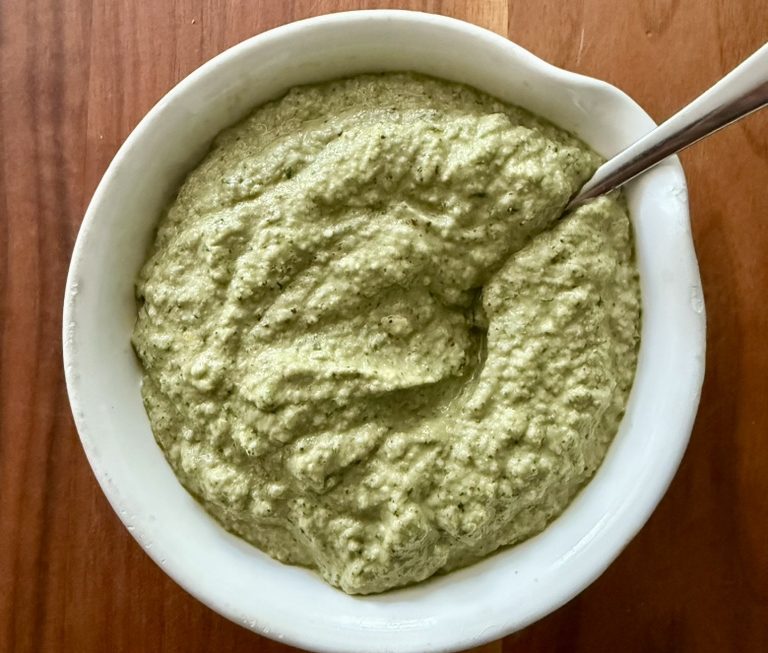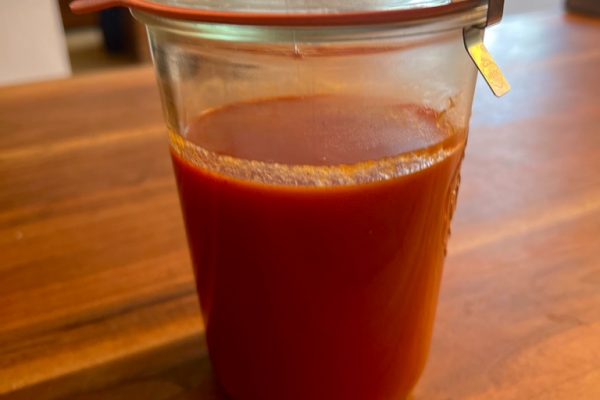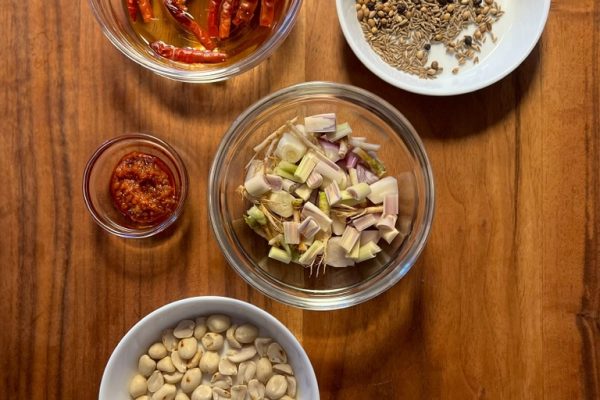There are countless varieties of pesto available to buy, and some of them are good products. However, most of them fall far short in terms of taste compared to what you can make yourself in a short time, so here we explain a few variations as a starting point for your own research or further creations.
The best known and perhaps oldest pesto is pesto alla Genovese. It originates from the northern Italian coastal region of Liguria, where it has been an integral part of the cuisine for centuries. The term “pesto” is derived from the Italian “pestare,” which means “to crush.” Originally, pesto was made exclusively in a mortar, which is still the most suitable tool for the job today. Pesto made in a mortar has the right texture, which is not completely smooth, giving it a special mouthfeel. In addition, crushing releases essential oils optimally. It is quicker to use a mixer, cutter, or hand blender, but care must be taken not to make the pesto too fine or to heat it (which can cause herbs to oxidize and turn brown, for example). Therefore, when using such a device, the blades should only be allowed to run briefly and the pesto should be processed in batches.
Pesto is a raw sauce, meaning it is not cooked. It is usually eaten with pasta, but can also be used to enhance bread and salads, as a dip with vegetables, or served with fish, meat, and potatoes. It tastes best when fresh, so it should ideally be used immediately after preparation.
All of the following information refers to quantities for 4 people.
Basil pesto (Pesto Genovese):
3 tbsp toasted pine nuts (30 g)
2 small garlic cloves, peeled and crushed (10 g)
30 g each of Parmigiano Reggiano and Pecorino (Romano or Sardo), grated
½ tsp coarse sea salt
Freshly ground black pepper (5 turns of the mill)
50 g fresh basil leaves
100 ml best extra virgin olive oil
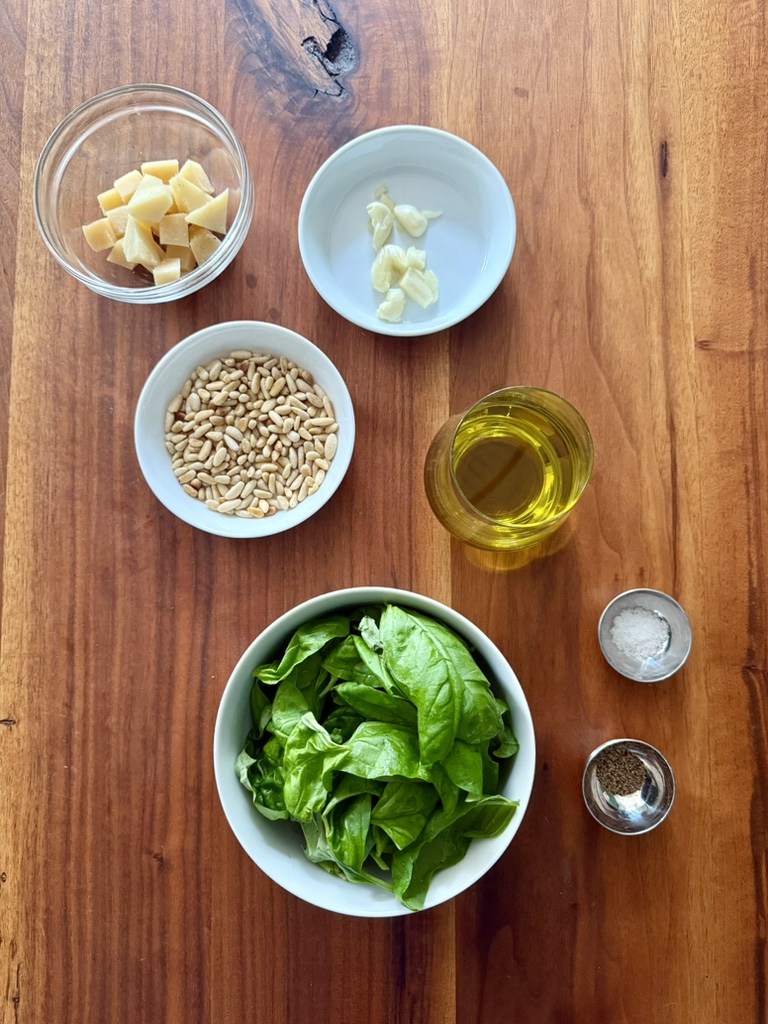
It is very important to use high-quality oil. Mild and fruity, not bitter or pungent. Never use the stems of basil. Coarse sea salt helps to crush the other ingredients. Parmigiano adds umami and Pecorino adds spice. Never use too much raw garlic, otherwise you won’t be able to taste anything else. Pine nuts should always be toasted to bring out their full flavour. To do this, place them in a dry frying pan over medium heat and shake the pan repeatedly to turn the nuts. Do not leave the stove unattended, as the nuts brown quickly and burn very easily.
First, crush the pine nuts and garlic with the salt (or briefly pulse in a blender). Then add the other ingredients, adding the cheese last.
The pesto can be stored in a jar with a lid and covered with a little olive oil in the fridge for about 3–5 days. It can be frozen, but this is not necessarily advisable as it loses its fresh flavour.
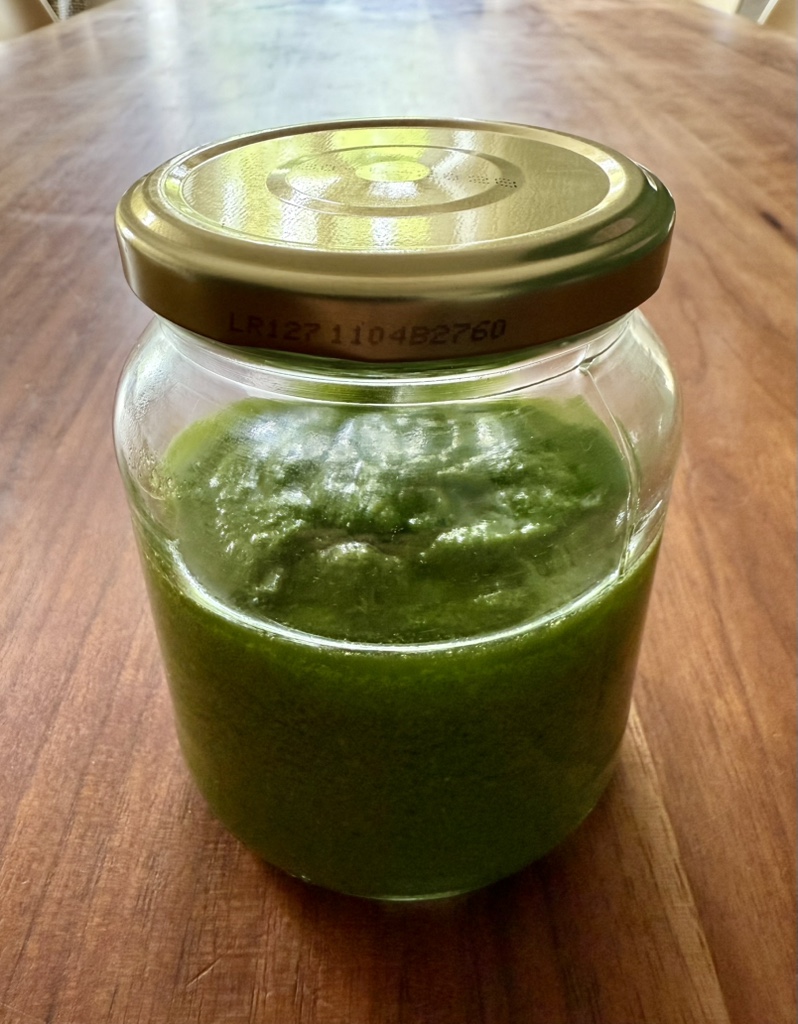
Pesto rosso:
100 g dried tomatoes (or 150 g dried tomatoes preserved in oil)
100 ml white wine
50 g almonds
2 cloves of garlic
Optional: A little fresh red chilli, seeds removed
1 handful of basil leaves (approx. 30 g)
If using sun-dried tomatoes without oil: 50 g olive oil
100 g Pecorino cheese
Zest of ½ lemon
Salt and pepper to taste
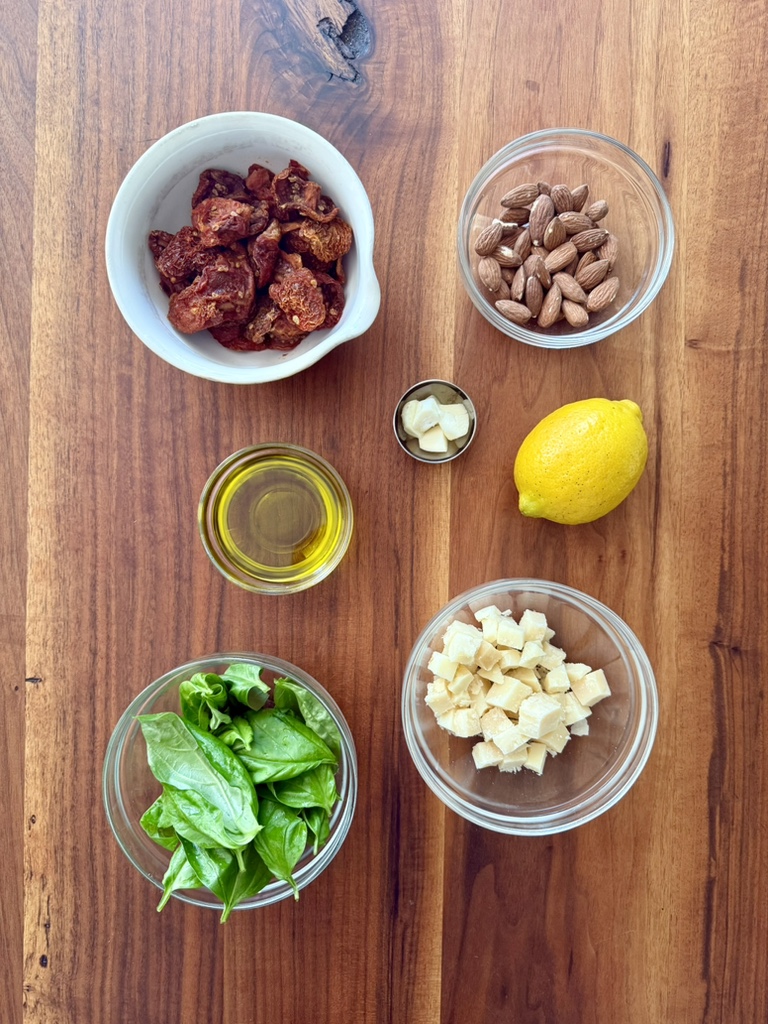
Pesto rosso is probably the second best-known pesto, partly because it is widely available commercially – but often of terrible quality, so it’s best to make it yourself.
You will need dried tomatoes. These are available either dry or preserved in olive oil. If you use tomatoes preserved in oil, there is nothing else to do. Dried tomatoes – which is what we use – are rehydrated by boiling them briefly in a little white wine and then leaving them to stand for 10 minutes. You will also need a little extra oil in the pesto.
The other ingredients are almonds (other nuts or pine nuts can also be used), a little chilli, garlic, basil and Pecorino cheese.
First chop the nuts, then the tomatoes and garlic, then the remaining ingredients. Add the cheese last.
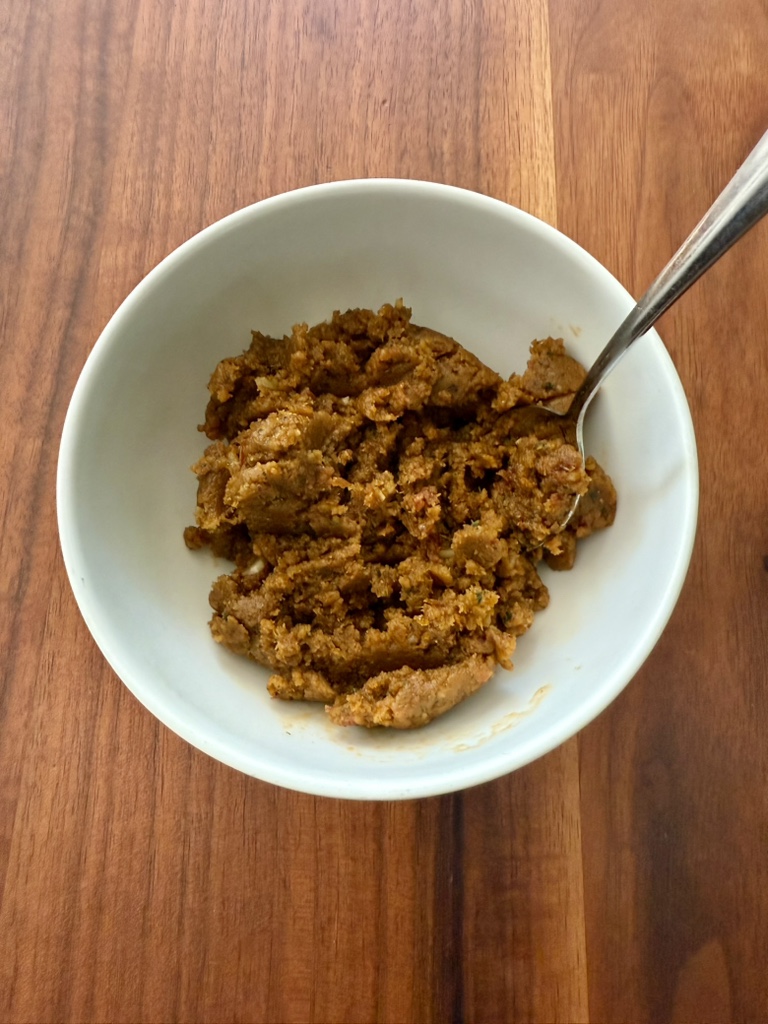
Aubergine pesto:
600 g aubergines (2–3 small ones)
60 g almonds (do not need to be blanched)
80 g Pecorino cheese
1–1.5 tsp salt
Black pepper to taste
A little cayenne pepper or chilli flakes
Juice and zest of ½ organic lemon
40 g basil leaves
60 g best extra virgin olive oil

When vegetables are processed into pesto, the result is a kind of cream that can be used in exactly the same way as other types of pesto. It is not cooked like a sauce, but used as a dip or mixed with a little pasta cooking water to create an emulsion with the desired consistency.
Wash the aubergines and prick them several times all over with a fork. Then bake them on a rack in the oven at 220 °C without fan for 45 minutes. Once cooled, cut them in half lengthways so that the flesh can be removed with a spoon. Next, chop the almonds and add the basil and aubergine. As always, the cheese is added last.
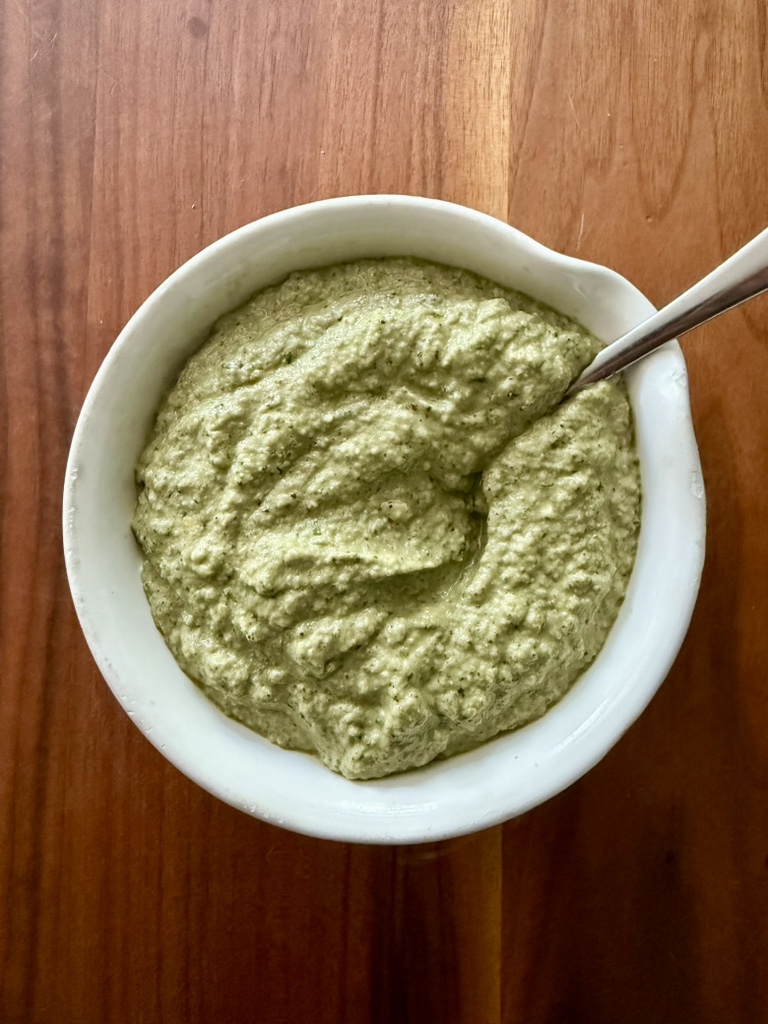
Garlic pesto:
6 cloves of garlic
2 small, very ripe tomatoes
60 g best extra virgin olive oil
40 g roasted pine nuts
40 g basil leaves
60 g Parmigiano Reggiano
Salt and black pepper
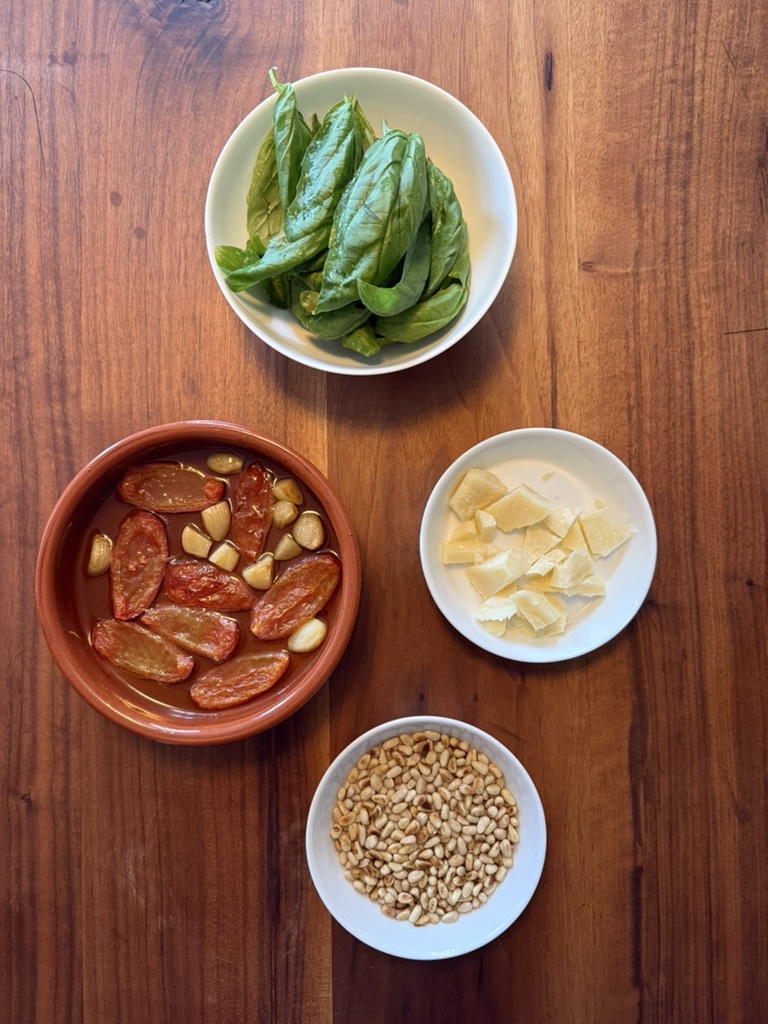
Preheat the oven to 180 °C. Peel the garlic cloves, quarter the tomatoes and remove the seeds and surrounding jelly. Mix both with the olive oil and braise in a small ovenproof dish for 15 minutes.
Once cooled, chop the garlic and tomatoes with the pine nuts and then the basil leaves. Add the flavoured oil and finally stir in the cheese. Season to taste with salt and freshly ground black pepper.
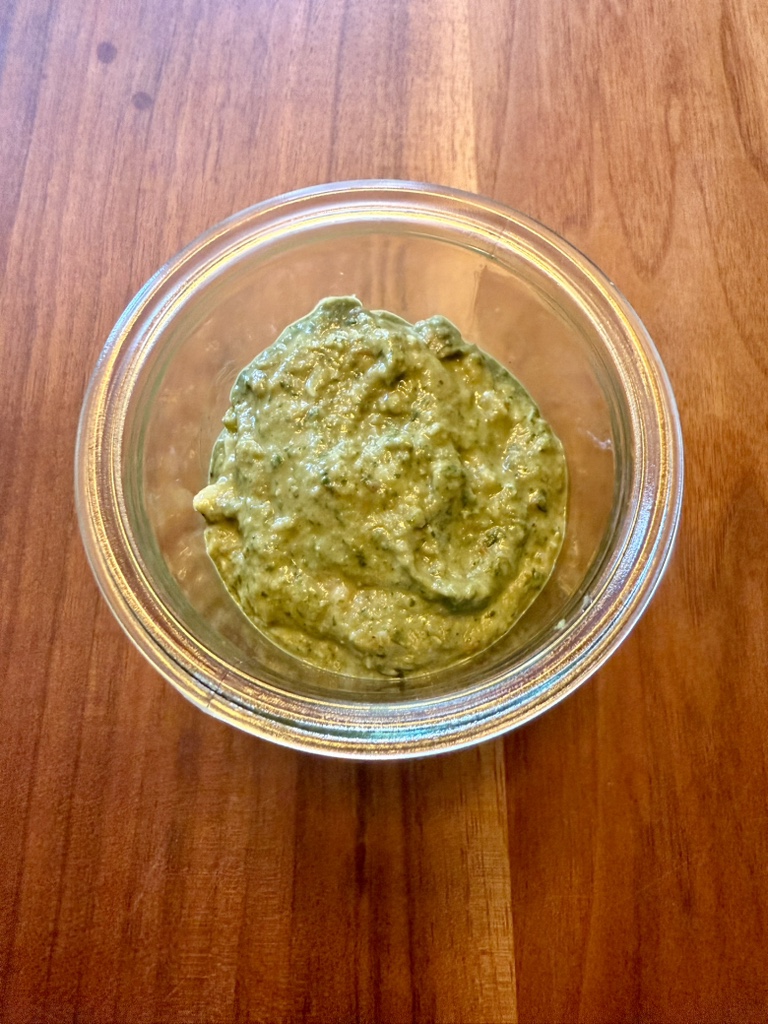
Enjoy.
And may the taste be with you.
